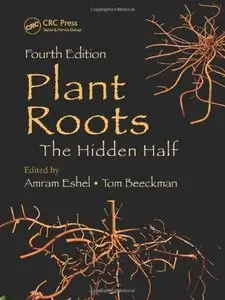Amram Eshel, Tom Beeckman, "Plant Roots: The Hidden Half, Fourth Edition"
English | 2013 | ISBN-10: 1439846480 | 848 pages | PDF | 83 MB
English | 2013 | ISBN-10: 1439846480 | 848 pages | PDF | 83 MB
The decade since the publication of the third edition of this volume has been an era of great progress in biology in general and the plant sciences in particular. This is especially true with the advancements brought on by the sequencing of whole genomes of model organisms and the development of "omics" techniques. This fourth edition of Plant Roots: The Hidden Half reflects these developments that have transformed not only the field of biology, but also the many facets of root science.
Highlights of this new edition include:
The basics of root research and their evolution and role in the global context of soil development and atmosphere composition
New understandings about roots gained in the post-genomic era, for example, how the development of roots became possible, and the genetic basis required for this to occur
The mechanisms that determine root structure, with chapters on cellular patterning, lateral root and vascular development, the molecular basis of adventitious roots, and other topics
Plant hormone action and signaling pathways that control root development, including new chapters on strigolactones and brassinosteroids
Soil resource acquisition from agricultural and ecological perspectives
Root response to stress, with chapters that address the impact of the genomic revolution on this topic
Root-rhizosphere interactions, from beneficial microorganisms to detrimental nematodes
Modern research techniques for the field and the lab
Each chapter not only presents a clear summation of the topic under discussion, but also includes a vision of what is to be expected in the years to come. The wide coverage of themes in this volume continues the tradition that makes this work recognized as a fundamental source of information for root scientists at all levels.



